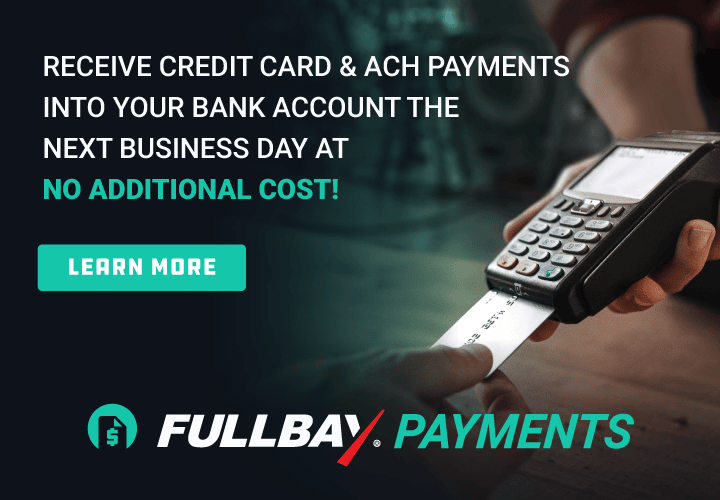5 Ways a Tow Invoicing App Streamlines Your Business

If you’re still using pen and paper to create invoices (or even the slightly more advanced version of manually typing everything into a Word document), it’s time to rethink your approach.
Invoicing can be a tedious, time-consuming process for any company—when you handle it the old-fashioned way, that is. In fact, one survey found that two-thirds of businesses spend over five days per month on this work.
Have you ever wondered how using an invoicing app can help your towing business streamline its operations?
Sorry, what’s that? You haven’t?
That…well, that honestly kind of undermines the point we’re trying to make here. Would you mind pretending you’ve spent some time thinking about this so we can move along with the blog? Awesome! We owe you one.
With that out of the way, here’s Fullbay’s complete guide to how invoicing apps can help your towing business run as smoothly as possible.
1. Track Towing Mileage
If you work with trucks and are responsible for preparing invoices, you’ll want to be able to track mileage. Up until recently, this meant asking your tow drivers to manually log billable miles—an obvious hassle for everyone involved.
But the best tow invoicing app options offer a better way to handle this task: automatic mile tracking through GPS integrations. From there, you can easily add that billable mileage to your next invoice. But remember, this sort of towing-specific thing just isn’t built into generic invoicing software.
There’s more good news: you won’t have to buy specialized hardware to benefit from this feature—it only requires a standard mobile device.
2. Build Estimates and Invoices
Typically, putting together truck repair estimates involves a certain amount of guesswork. To avoid this situation, towing businesses often check industry-standard labor times from MOTOR as part of the invoicing process.
A tow invoicing app can go a long way towards making this part of the process even easier. The best programs in this niche (*cough* Fullbay *cough*) offer MOTOR’s standard labor times as a built-in feature. That means your crew members won’t have to stop what they’re doing to find this information.
Best of all, these programs can eliminate any guesswork in the invoice-building process itself. They can guide your techs through an inspection, help them build an estimate for that job, and convert that estimate to an invoice.
3. Send Authorization Requests
Your customers are busy and the world is full of distractions. Approving authorization requests probably isn’t their top priority.
Your best shot at getting their attention is using modern-day communication methods like email or text while sending your requests for work authorization. Make it fast and easy for them, and they’re more likely to follow through.
Industry-leading invoicing apps offer these capabilities, as well as convenient digital portals where customers can review estimates and approve repairs. It’s easy for you, and easy for them. Trust us—everyone loves Fullbay’s Customer Portals.
4. Easily Make Tweaks
Even the most mundane repair job can take an unexpected turn or two. In other words, you might need to add fees or services to reflect expenses you didn’t include in your initial estimate. Alternatively, maybe you want to tack on a discount.
The right towing invoicing app can provide these capabilities without forcing you to rebuild the whole thing from scratch. Ideally, it only takes a click or two.
5. Accept Flexible Payment Options
Finally, your invoicing app of choice needs to go beyond just accepting “standard” payment options. After all, your customers might want to pay you for your work by using:
- Credit cards. As one of the most common payment methods in the world today, credit cards need no introduction. Obviously, your towing business needs to accept credit card payments for repairs—but you shouldn’t stop there, either.
- ACH payments. Also known as “Automatic Clearing House” payments, this method involves sending electronic payments from one bank to another. Both direct deposits and direct payments fall under the ACH payment umbrella.
- Fleet checks. Along with the payment methods described above, you should be ready to accept industry-specific payment types. Fleet checks are one of these methods—they work similarly to cashier’s checks, and payment for these checks is verified during payment by the fleet itself.
- Fleet cards. This is the other big trucking-industry payment method you’ll want to accept. These function like “normal” credit cards but focus on allowing heavy-duty drivers to pay for maintenance work and fuel.
Maximize Your Efficiency with Fullbay
Whether you’ve thought about using a towing invoicing app for a while or you’ve just decided to make the leap, switc/hing to one of these programs is more than worth your while. A well-designed invoicing app can help your towing business automatically track miles, supercharge its authorization requests, accept all sorts of payment options, and much more.
As you might expect, not every tow invoicing app offers all these features. That means it’s a good idea to search for one that does—like Fullbay, for example.
To learn more about how Fullbay’s tow truck repair software can transform your company’s invoicing strategy, shop efficiency, and overall profitability, set up a demo today!

